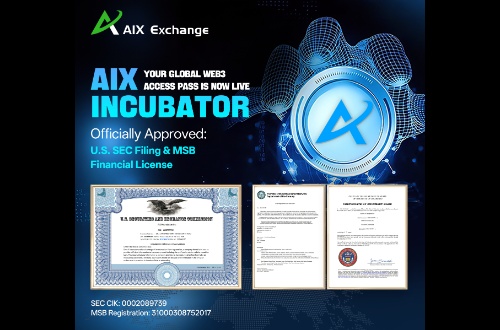IPv8 – Explore BitCherry on IP level.
 2020-10-15
2020-10-15
 BitCherry
BitCherry
As mankind is about to move towards an intelligent, fully-connected world of Internet, Internet of Everything, is an integration of virtual and real, is to face new generations, new services, and new needs, traditional IP networks have long been unable to handle it. How to make IP networks inherit the genes of success to make it to continue the development on the basis of meeting the new needs of the future industrial Internet, and promote the digitization of the entire industry, this issue has become a common concern of the industry.
The current IP technology started in 1969 and the protocol was finalized in 1978, it nearly operated for 50 years and has achieved great success. It turned out that IP technology focused on connecting computers around the world before, mainly in the office field; later it extended to mobile internet, so all mobile phones connected by later IP technology; but for so many years, traditional IP technology has been unable to meet the rapid development of industrial internet which has a series of requirements such as low latency and security.
According to a report in the ‘Financial Times’, Huawei, in conjunction with the Chinese Trade Union, China Telecom, and the Ministry of Industry and Information Technology, submitted a proposal called “New IP” to the International Telecommunication Union (ITU).
Huawei distributed an impressive article (titled “New IP framework and Protocol for Future Applications”). The article explains that new IP is a new Internet protocol framework which can better support emerging network applications, such as multi-network and holographic communication, etc., The new IP will fundamentally support the variable length of the network layer, multiple semantic addresses, and user-defined networks.
It is not difficult to observe that the innovation of IP network architecture has become the top priority in the current network society. The emerging technology of blockchain, relies on the Internet, whether or not will launch its own journey of ‘IP revolution’.
As we all know, the network protocol is the basis of the network program, and the peer-to-peer network is also the basis of the blockchain operation. Therefore, the security and connectivity speed of the network protocol directly affects the security and performance of the blockchain. However, all existing public P2P protocols work above the TCP transport layer of the host side of the IPv4/IPv6 wide area network, which leads to have a network security issue which is gradually becoming a potentially huge problem, because the TCP/IP protocol was not formulated with a full consideration of security at all. We should fully consider its security, so in the actual application process there won’t be attacks such as IP address spoofing, source routing attacks, network eavesdropping and so on. Secondly, the IPv4/IPv6 network architecture is prone to data loss and incomplete transmission during data transmission.
In order to solve these issues, BitCherry firstly proposed, the block chain network protocol built on IPv8 technology. In order to ensure privacy of data transmission and malicious nodes, different with the traditional P2P network protocols, The P2P+ network protocol uses a point-to-point high-strength private key encryption technology. The transmitted content is encrypted, and only the receiving node can decrypt it, ensuring the confidentiality of the transmitted content and node privacy. The public-private key mechanism can be used not only to encrypt the communication process, but also to authorize access through signatures. Unlike the SSL certificate system and account/password method adopted by OpenSSN, P2P+ authorizes network reads/writes of 8-bit virtual IP addresses and identifies them by the public key signature of the virtual IP addresses to prevent false IP address attacks.
BitCherry P2Plus work on more underlying IP network layer and the data link layer (which can work simultaneously in Host and router), so P2Plus can easily penetrate any network, firewall, and network fence, greatly improving the accessibility of data transmission.
As it can be seen above, Huawei New IP and BitCherry IPv8 have some similarities like:
1. Background: Both are based on the disadvantages of the traditional Internet, which exist in the background that the traditional Internet is unable to support the connection of massive networked subjects, has low transmission efficiency, instability, and is prone to attacks.
2. Objective: Both are committed to build a more secure, efficient, and open internet, supporting the interconnection of all networks, the interconnection of all things, and precise transmission. It has the characteristics of flexible addressing, efficient operation, safety, and efficiency.
When the reality of traditional internet increasingly becoming unstable, we believe there will be more new technologies that will build with BitCherry for a better future, we also believe, this technology of BitCherry, will become the most dazzling star. The release of new IP, will also have a more active role in the development of BitCherry, the two will work together to accelerate the upgrade of the Internet. Let us look forward to the arrival of web3.0 together!







